Fiber is good for our health as it helps regulate the body’s use of sugar, lowers blood cholesterol, and helps food move through the digestive system. However, there are certain conditions where one needs to limit their fiber intake instead. Doing so involves focusing on low fiber foods and watching your total fiber intake.
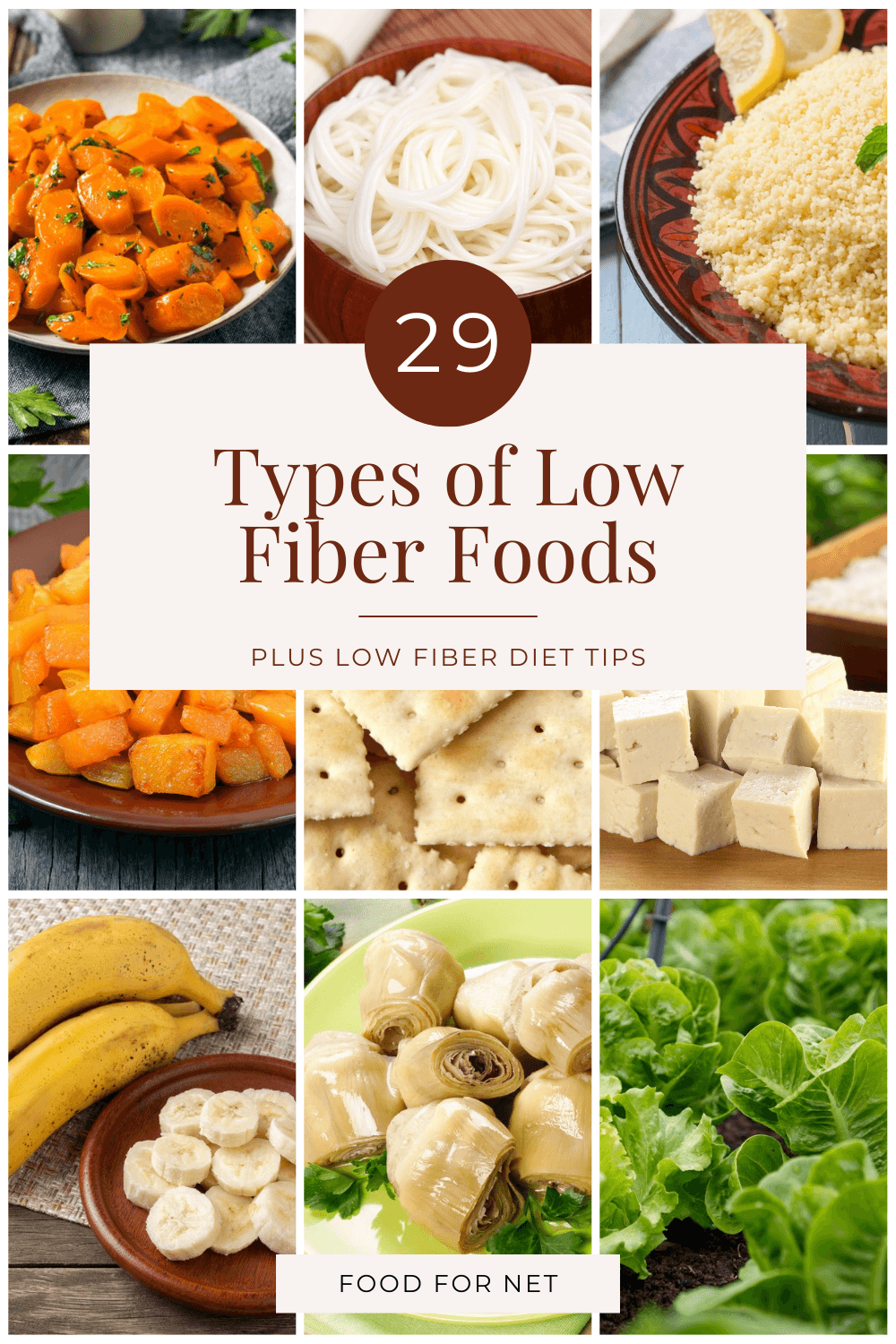
In particular, a low fiber diet is oftentimes needed if there is a flare-up of a bowel problem or right after bowel surgery, along with when someone has Chron’s disease, ulcerative colitis, diverticulitis, and other conditions that affect the bowels. Some cancer treatments may also require the patient to follow a low fiber diet.
Interestingly, there are two types of fiber – soluble fiber which absorbs water and turns to gel during digestion, and insoluble fiber which doesn’t dissolve in the stomach and eventually adds to the stool. Some people may find it tolerable to still have soluble fibers in their body even if they’re on a low fiber diet, while others need to limit their intake of both types of fiber.
Here is a list of low fiber foods that you can include in your meal plans if you are to go on a low fiber diet. Eating these foods will give your bowels a rest and potentially relieve symptoms like inflammation, abdominal pain, bloating, cramping, and gas.
You may also want to check this list of foods with high fiber content to make sure you know what foods not to eat while on a low fiber diet.
Types of Low Fiber Foods (With Pictures!)
Eggs
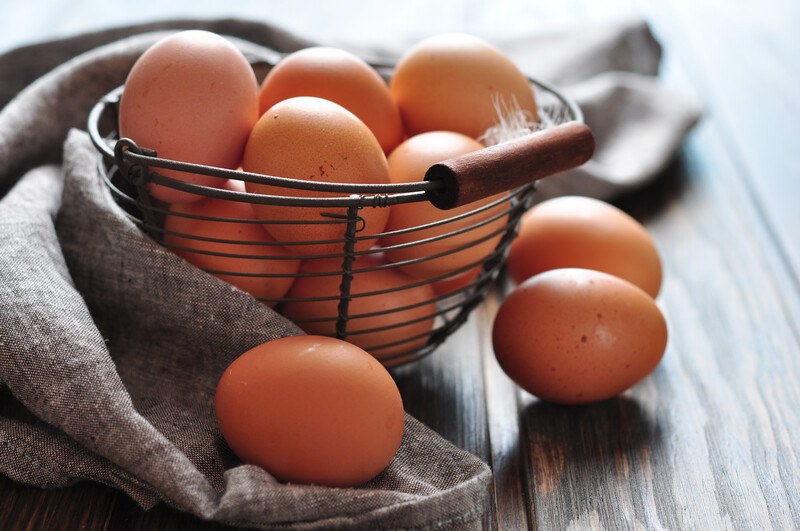
Eggs are great sources of selenium, zinc, iron, copper, and vitamins D, B6, and B12. They’re also high in protein. Eggs help improve levels of good cholesterol, boost nutrient intake for healthy aging, and protect the eyes.
What’s more, eggs contain omega 3 fatty acids, which support heart and brain health. So, you can eat eggs to your heart’s delight! In fact, you can make a lot of exciting egg breakfasts by adding different spices and herbs. You can also make pickled eggs and eat these on the go.
White Bread
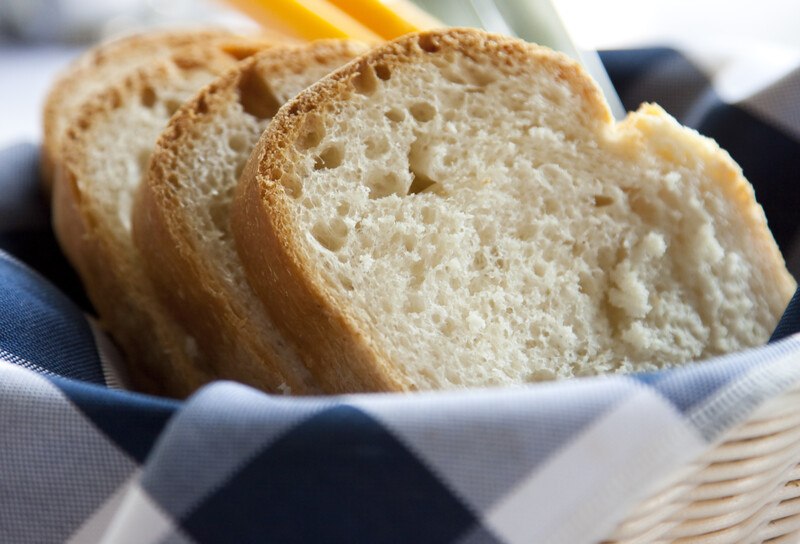
White bread may not be your first choice when it comes to ‘healthy bread’ but when consumed sparingly white bread isn’t that bad. It can even be helpful on a low fiber diet.
In particular does contain nutrients as well as carbohydrates, protein, and B vitamins. It is also a useful vehicle for healthy ingredients, including low fiber veggies, spreads, and lean protein.
You have to keep in mind though that too much white bread in your diet can cause your sugar levels to spike and can contribute to diabetes, obesity, and heart disease. So, portion control is essential.
Peaches
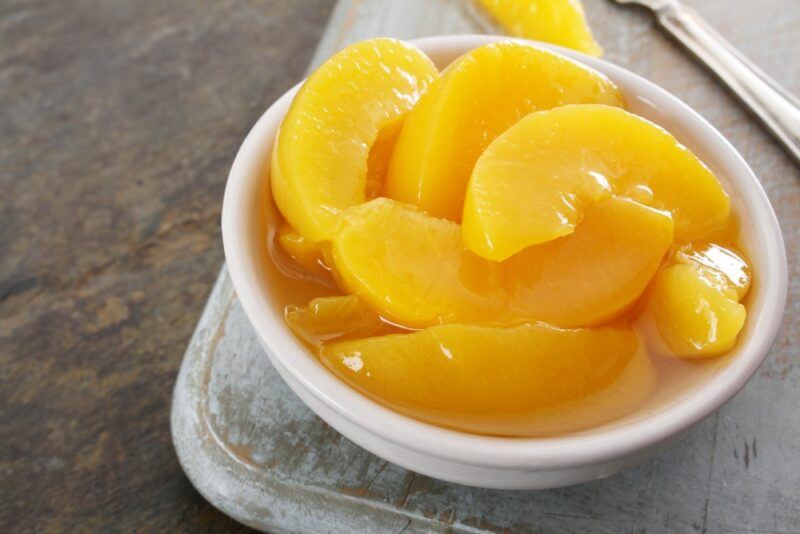
Did you know that peaches promote healing? Yes. Well, now you know. A medium-sized peach can give you a healthy dose of vitamin C and A – which helps in healing wounds and strengthening your immune system.
Peaches also contain vitamins E and K, folate, niacin, iron, choline, potassium, phosphorus, magnesium, zinc, and copper. So, what’s not to like about peaches, right? Many of the benefits are found in canned peaches as well, which are a convenient snack and a useful dessert ingredient.
However, it’s important to skip peach skin when following a low fiber diet. You should be doing the same for any other type of low fiber fruit as well.
Fish
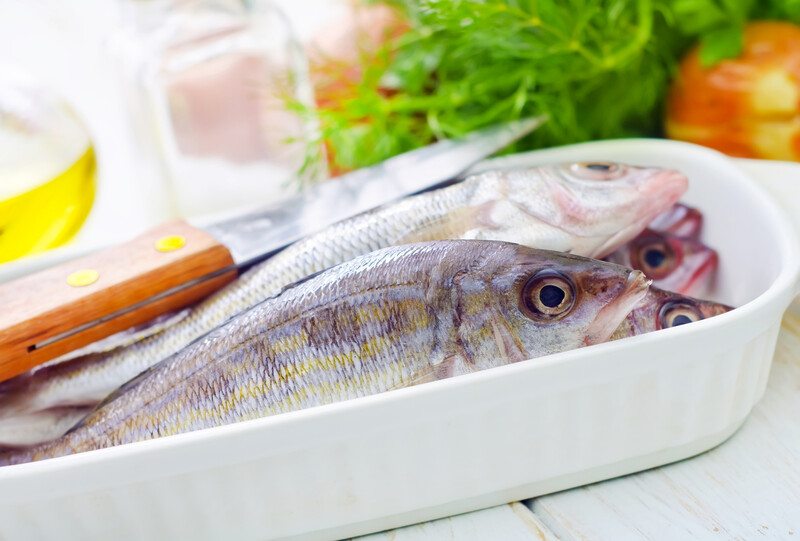
You don’t want to miss out on omega 3 fatty acids, as these are powerful for health. So, enjoy your fish. And enjoy it freely because there is no dietary fiber in it, putting you in the clear.
Fish is actually a great source of calcium, phosphorus, iron, zinc, iodine, magnesium, and potassium. For a healthy diet, try having a good serving of fish at least twice a week. For ideas on how to best serve your fish, see here a list of spices and fish recipes to get you off to a good start.
Tomato Sauces
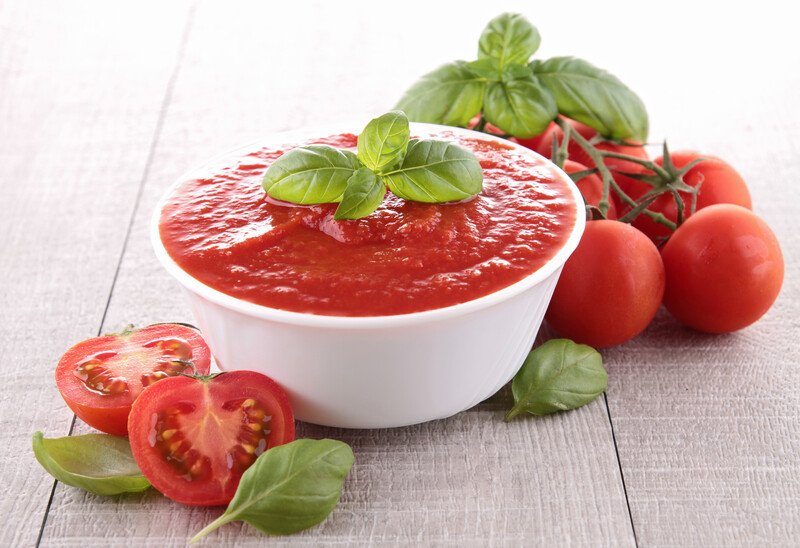
You can still enjoy your spaghetti since tomato sauces (no seeds, strained) are considered low fiber food. Pasta sauces are just one way of using tomato sauce, you can also use it in your ratatouille, pizza, stuffed peppers, soups, and more.
Tomatoes are best known for their lycopene content which may prevent certain types of cancer. The fruit is also rich in folate, vitamin C, potassium, and carotenoids.
Yogurt
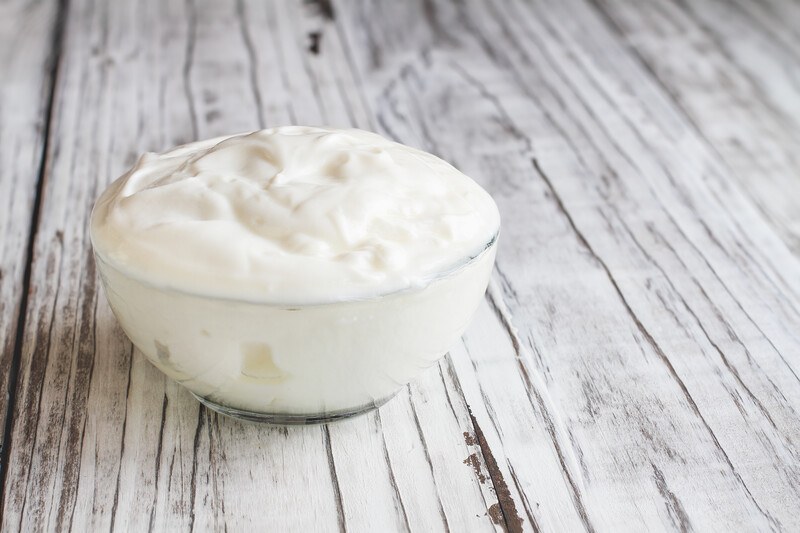
Yogurt, particularly the plain varieties, is also in the clear. It’s a great source of protein, calcium, and potassium. It’s also packed with vitamins and minerals while being relatively low in calories.
Yogurt benefits the digestive system and may also strengthen immunity, promote heart health, protect against osteoporosis, and boost weight management. Check the labels just to be sure that no fiber is added to them.
Now, you may say plain yogurt is no fun, well then, throw in some skinless peaches in there! You could also mix in honey or a little cinnamon. Both add-ins provide flavor while keeping the fiber content low.
White Rice
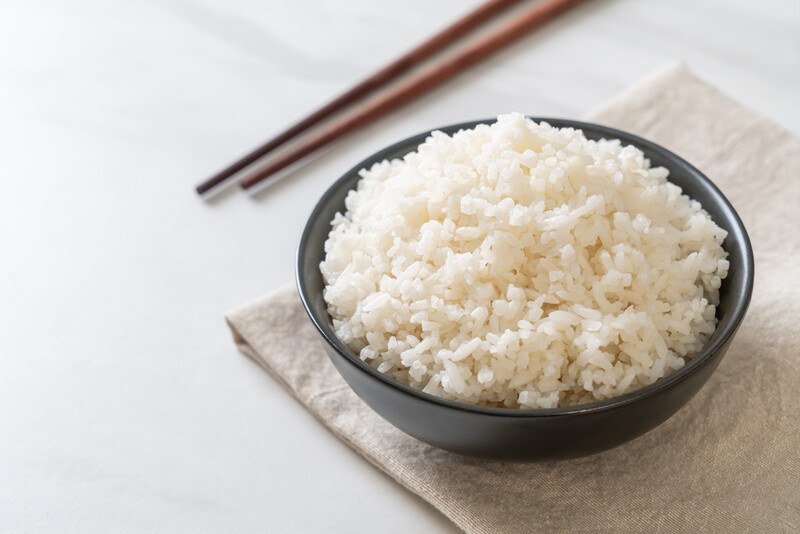
White rice, although stripped of fiber-rich bran and nutrient-packed germ, still contains carbohydrates, calcium, iron, thiamin, vitamin E, pantothenic acid, and folate. White rice is also easy to digest and is gluten-free. It may even help to stabilize blood sugar levels, promote heart health, and improve your gut.
The rice tends to be bad for your health only when you’re consuming it in big quantities. So, keep an eye on your portions and you’ll be all good. And you also have to keep in mind that white rice has a higher glycemic index than brown rice and most fiber veggies, as it is high in simple carbs.
Lettuce
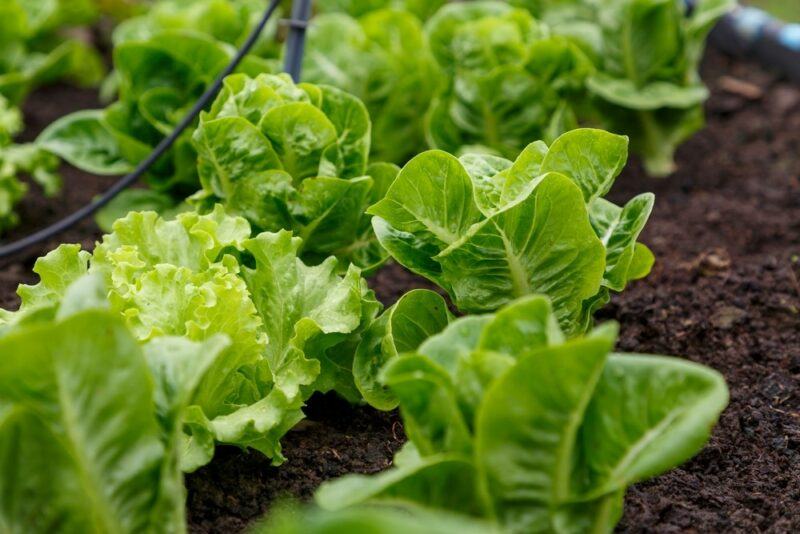
Lettuce is naturally low in fiber and low in sodium. But it is still a fairly decent source of minerals including calcium, phosphorus, potassium, and magnesium. It’s great for vitamin K as well which helps strengthen bones and reduce the risk of bone fracture.
The water content is high as well, which makes lettuce good for hydration. Aside from salads, you can use lettuce in your wraps or spring rolls, soups, smoothies, slaw, and even in grilled or braised dishes.
That said, lettuce is an ingredient to be careful with. While many people can consume it on a low fiber diet, others are sensitive. You may find that you need to skip lettuce, along with any other raw vegetables (even if they’re low in fiber).
Papayas
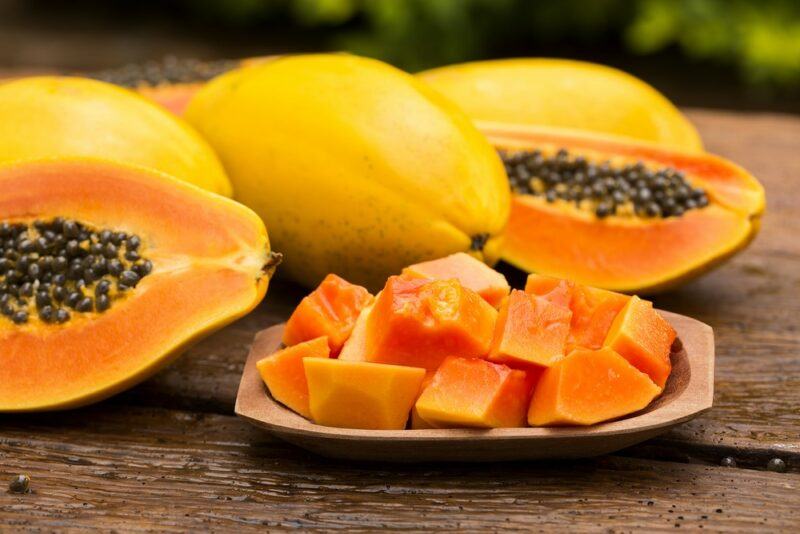
Papayas are not just low in fiber, they’re also an excellent source of vitamin C. In fact, one large papaya contains 2-3 times of your daily vitamin C requirements – although you don’t necessarily need to finish the whole thing, of course!
It also contains vitamin A, calcium, and potassium. Its antioxidants may reduce the risk of heart disease and prevent the oxidation of cholesterol. You can straight eat up papayas as is, but the fruit is also excellent in a papaya smoothie.
Just be sure to remove all the peel and skin before consuming the papaya.
Tofu
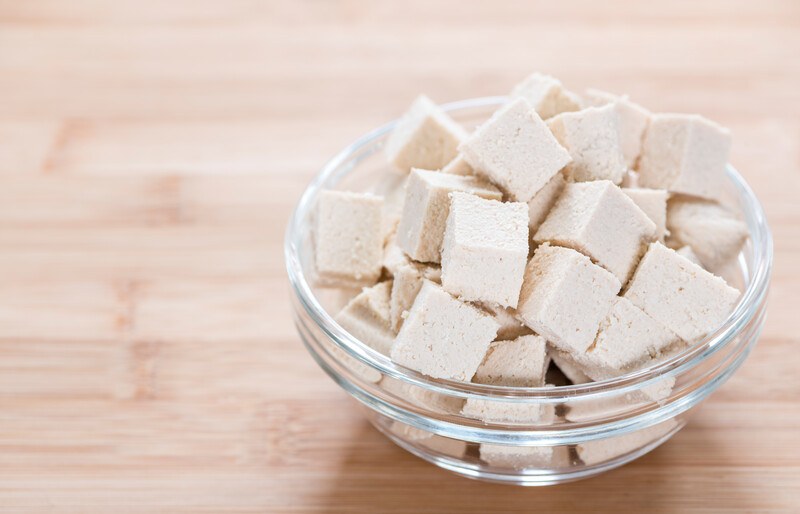
Tofu is a good source of protein and is actually perfect for a protein-rich diet. It also contains all 9 essential amino acids, iron, calcium, manganese, phosphorus, magnesium, copper, zinc, and vitamin B1. Needless to say, it’s quite a nutritional powerhouse, one that can be cooked or eaten raw.
Tofu may protect against diabetes, bad cholesterol, heart disease, and certain types of cancer. It’s also a great meat alternative and actually is quite a favorite among vegans.
Tofu is particularly powerful for low fiber vegetarian and vegan diets, as many other vegan protein sources contain fiber.
White Pasta
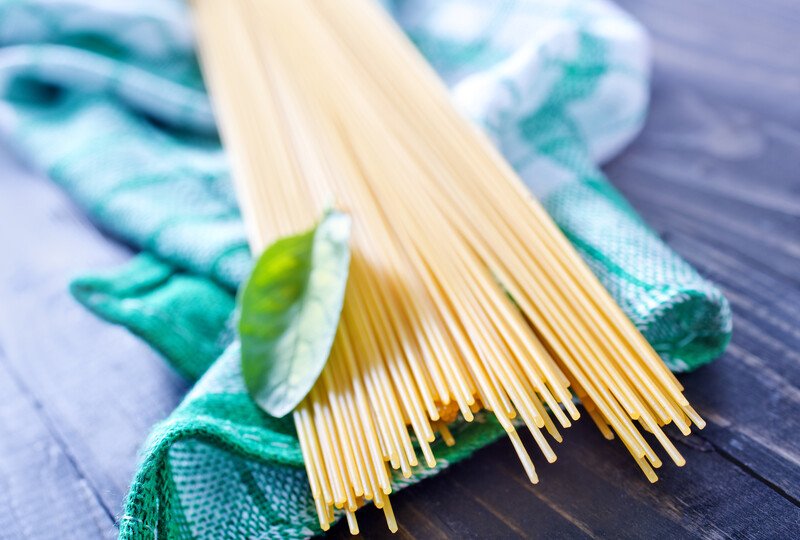
While white pasta does contain a lot of calories, it tends to be higher in iron and B vitamins compared with whole-grain pasta – and much lower in fiber. If you’re cautious about portion control, then white pasta shouldn’t be a problem.
You can also try making a more nutritious dish by adding veggies, herbs, or protein. White pasta doesn’t have to be the ‘bad guy’ in your diet, simply know your limits and find ways to serve it more healthily.
Smooth Peanut Butter
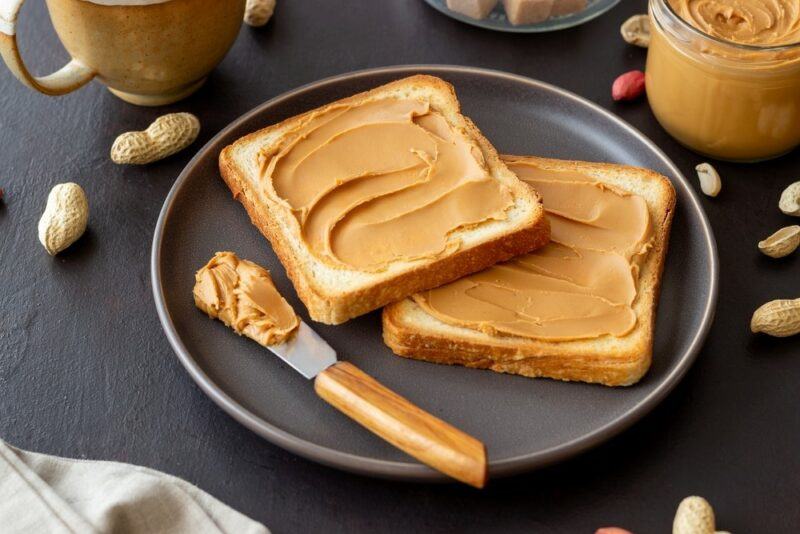
You can still enjoy your peanut butter, just go for the smooth ones because the chunky ones will of course contain more fiber. Peanut butter is rich in protein, magnesium, phosphorus, zinc, niacin, and vitamin B6.
Eating peanut butter helps maintain good cholesterol, blood pressure, and blood sugar levels which can help lower the risk of heart disease. It can also aid in weight management.
Carrots

Carrots which are perfect not just for snacking but for dishes as well are rich in beta-carotene. It can help in stabilizing blood sugar levels, strengthening bone health, improving eye health, and lowering the risk of diabetes. Eating carrots is also linked to a reduced risk of heart disease and cancer. So, eat away – you’re in the clear with carrots. You can roast, bake, sauté, or juice them. Really, they’re versatile!
Remember though, most vegetables need to be cooked on a low fiber diet, including carrots. Doing so makes them much easier to digest. You’ll need to remove the skins as well.
Cheese
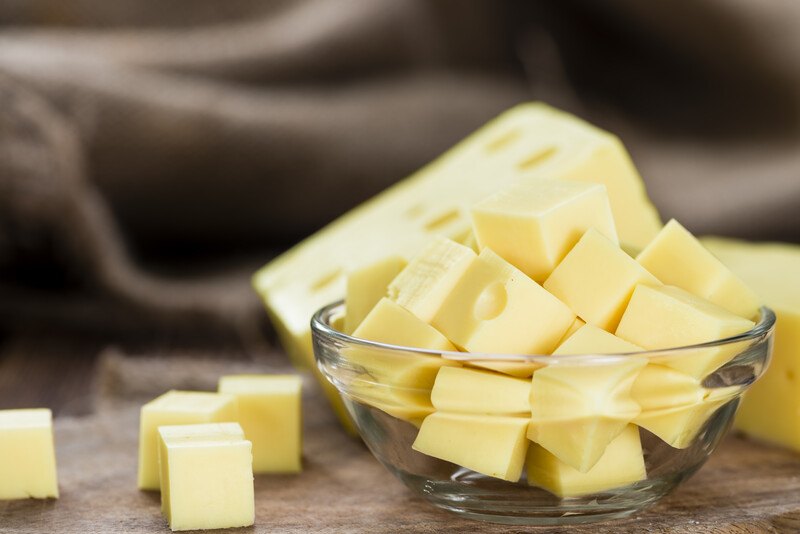
Cheese contains no fiber and will make for a great addition to your low fiber diet. It’s rich in calcium, fat, protein, zinc, phosphorus, riboflavin, and vitamins A and B12.
In fact, cheese made from the milk of grass-fed animals contains the highest nutrients including omega 3 fatty acids and vitamin K2. So, enjoy your cheese! Including dairy products on a low fiber diet can be helpful anyway because of all the nutrients they provide.
Red Meat
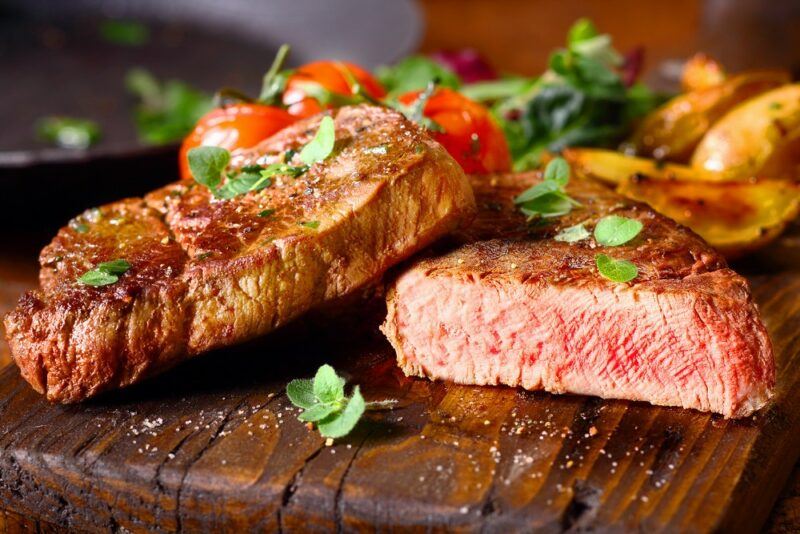
Red meat like beef, lamb, pork, veal, and venison are particularly rich in iron, creatine, and minerals like zinc and phosphorus. It also contains niacin, vitamin B12, thiamin, and riboflavin.
Such meats are perfect for providing the protein that will help build bones and muscles, and could even help your immune system
Bananas
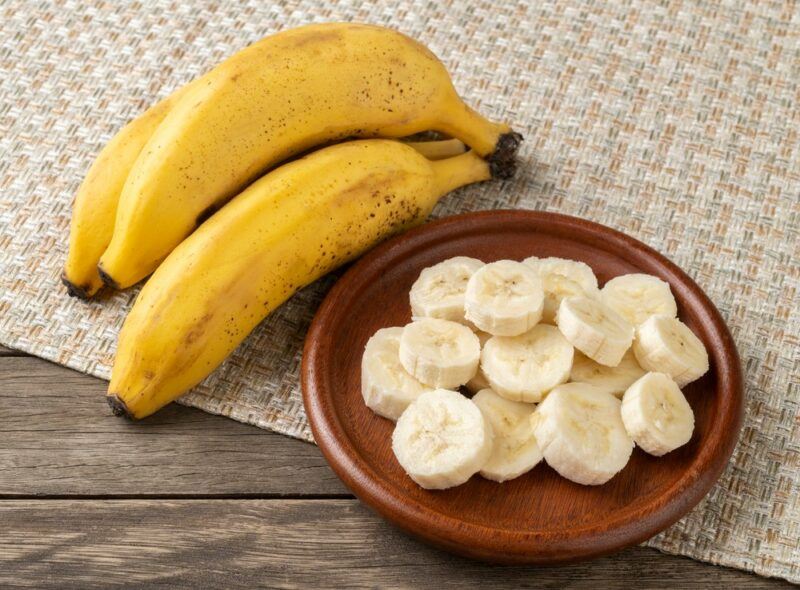
Bananas are a rich source of carbs. Go for the ripe ones because bananas become more digestible as they ripen (you can also freeze your bananas to help them last longer). Bananas also contain potassium, and vitamins B6 and C. Bananas can aid in digestion, boost heart health and reduce the risk of high blood pressure.
Strained Vegetable Juice
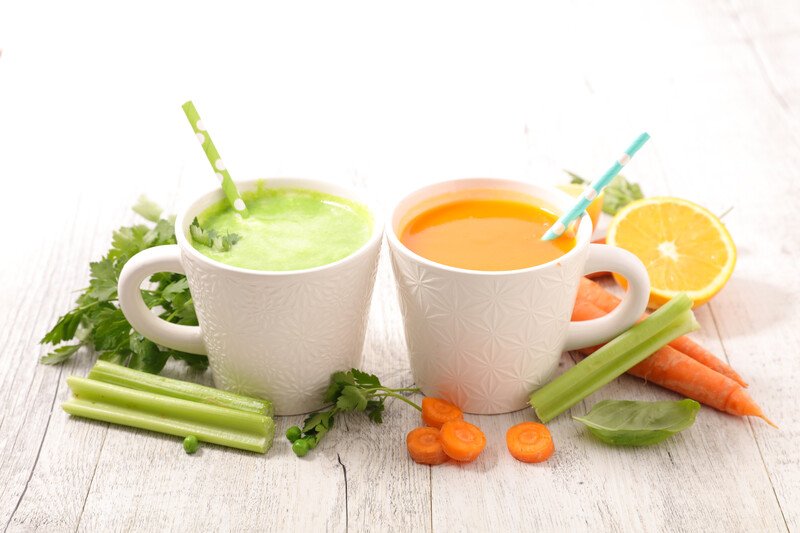
You can still get your daily recommended vegetables per day minus the fiber via juicing. The concentrated vegetable juice still has the vitamins and minerals as well as antioxidants less most of its fiber content.
Friends and family not following a low fiber diet could also use the pulp leftover from juicing in other recipes, like sauces, soups, and even some baked products. This is a fantastic way to stop the fiber from going to waste.
Milk
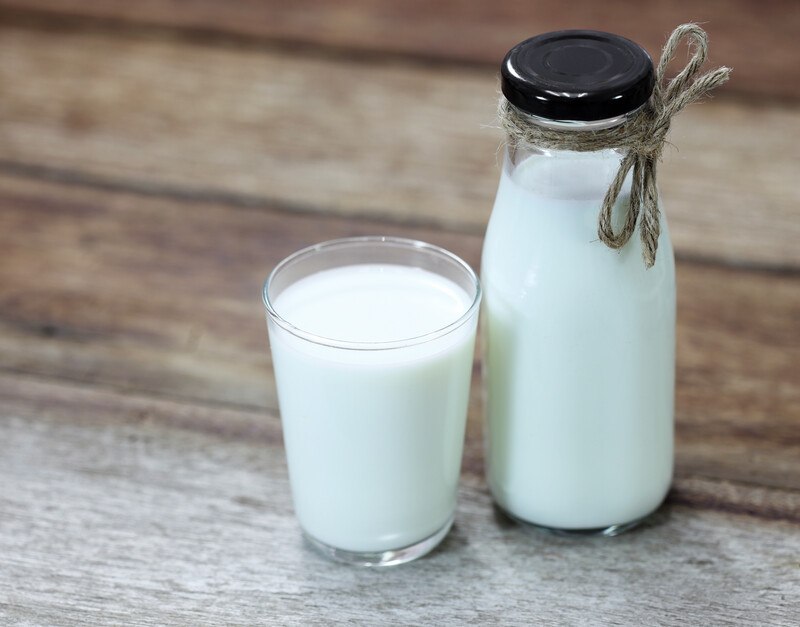
Don’t forget your milk – although keep it to a minimum of no more than 2 cups a day. This is because it may cause diarrhea or irritation in the walls of the intestine.
Go for lactose-free milk if you are lactose intolerant. Milk is rich in calcium, phosphorus, potassium, B vitamins, and vitamin D. It’s also an excellent source of protein. Milk helps in preventing osteoporosis, maintaining a healthy weight, and supporting bone health.
You can use some types of plant-based milk on a low fiber diet as well, like almond milk. Just check the ingredients label first to make sure the product is actually low in fiber.
Coffee
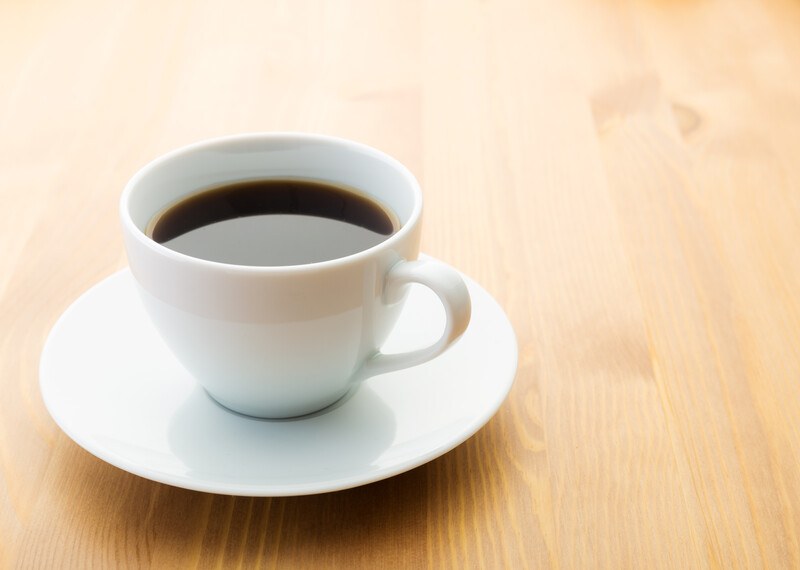
Enjoy a cup of coffee with all of its antioxidants and diterpenes. Its caffeine content which is a stimulant can enhance brain function and boost metabolism. It may also reduce internal inflammation and protect against certain diseases. And most importantly, new research links caffeine to a healthy gut microbiome. So, yes, please – enjoy your coffee.
Chicken
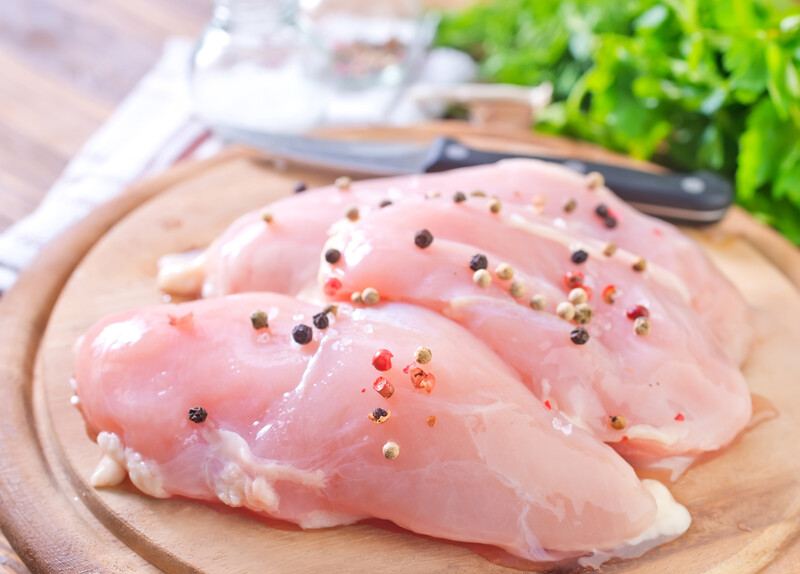
Another food that is rich in high-quality protein is chicken. Its fat is very minimal especially when you opt for lean cuts. Chicken also contains vitamin B12, zinc, iron, copper, tryptophan, and choline. Chicken is great for weight management and can even reduce the risk of heart disease. Its tryptophan content is actually linked to higher levels of serotonin in the brain.
Other types of poultry work well on a low fiber diet too. In fact, most types of meat can be included safely, including exotic meat. However, it’s important to choose the cut carefully. Look for low fat and non-grisly cuts, as these are the easiest to digest.
Couscous
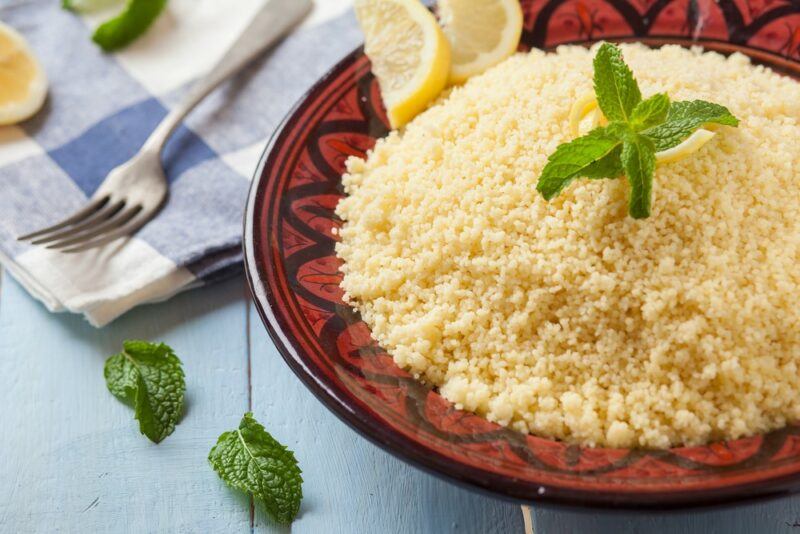
Couscous looks a little like quinoa or amaranth seeds, but it isn’t a type of seed at all and isn’t high in fiber. Instead, couscous is a type of pasta that’s made from water and semolina flour.
Like regular pasta, couscous is often refined and tends to be high in carbs and low in fiber. Those features aren’t normally a good thing, but they’re incredibly helpful for low fiber diets. Couscous is also versatile. It can be used in many recipes and even salads.
Rice Noodles
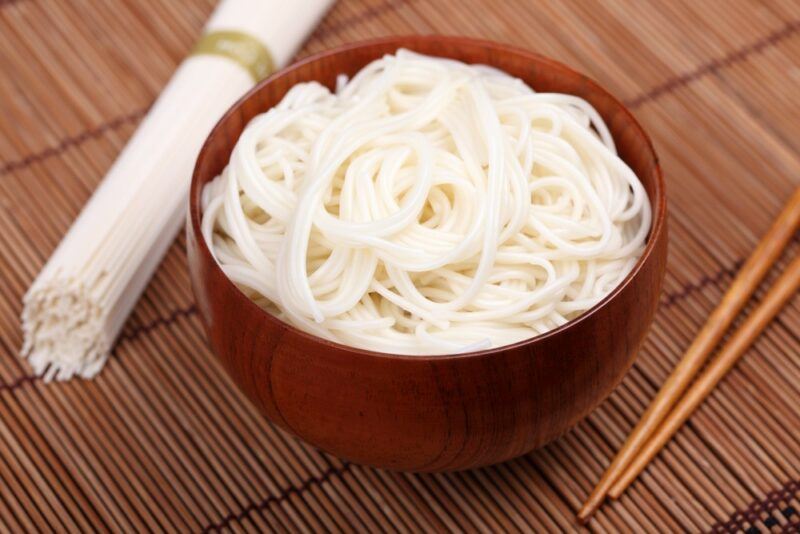
Rice noodles are generally made from white rice, so they have many of the characteristics of the rice. The big difference is their form, which means rice noodles work well in many dishes.
You might find yourself turning to these noodles regularly if you’re making Asian dishes or other ethnic foods. Just keep an eye on the other ingredients, as high fiber ingredients often make their way into such recipes.
Mushrooms
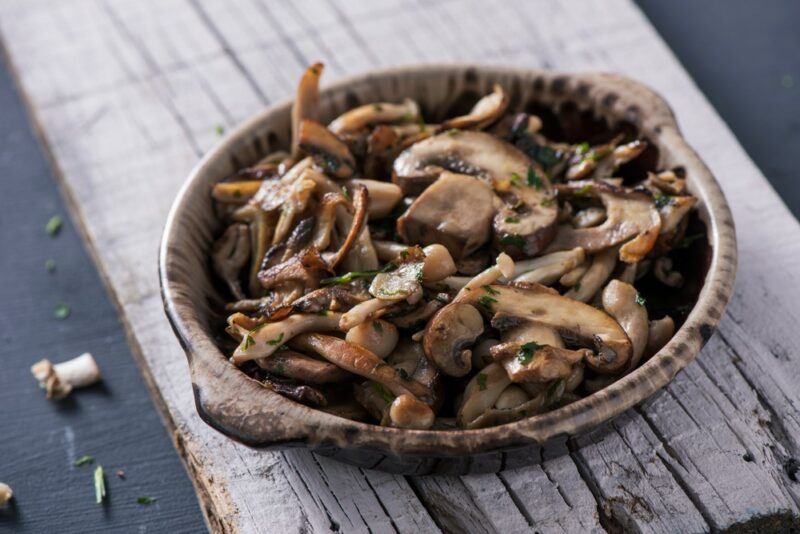
There’s some debate about whether mushrooms should feature on a low fiber diet or not. They are certainly low in fiber, containing less of the macronutrient than most vegetables. Mushrooms are also nutritious and even provide some protein.
The catch is that mushrooms are gas producing ingredients. This can be a problem for some people, particularly if you’re following a low residue diet rather than just a low fiber one. Because of this, it’s important to watch how your body responds. You might need to skip mushrooms if they give you side effects. If they don’t, they’re a valuable low fiber ingredient.
Canned Vegetables
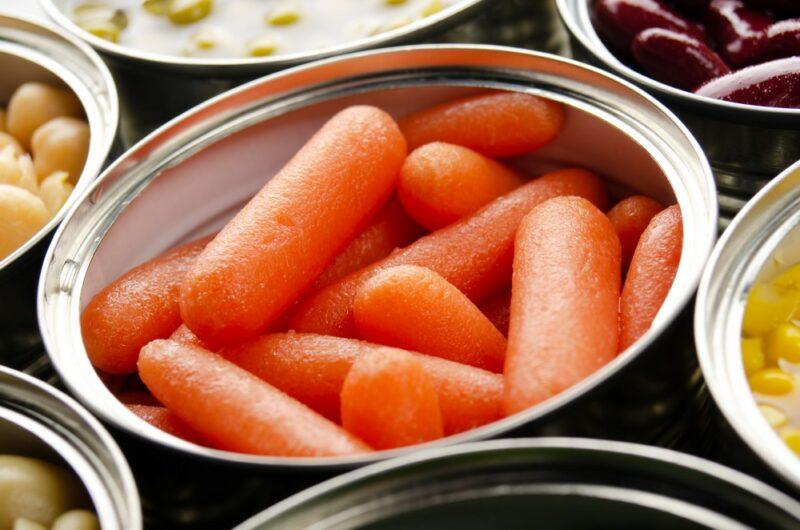
Many types of vegetables can be included on a low fiber diet, if they’re cooked well and don’t have any skins or seeds. Canned vegetables are a great example. These tend to be low in fiber and still provide you with nutrients and antioxidants.
You still need to be cautious though. Corn, green beans, and tomatoes with skin, for example, are still a poor choice, even when canned.
Think about your portion sizes as well. Low fiber diets often aim for around 10 grams of fiber per day or even less. You can easily go over this if your portion sizes are too high, even for low fiber vegetables.
Grits
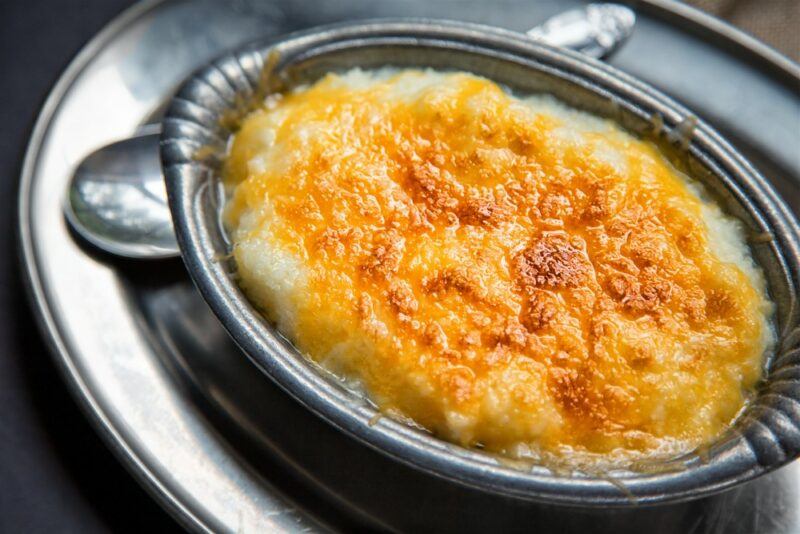
Grits are another excellent choice, as they’re a refined grain, so their fiber content is very low. They’re a delicious choice for breakfast, especially as many of the ingredients used with them are low in fiber too.
Be careful with the dairy though, including butter and milk. While dairy is low in fiber, it’s sometimes thought to produce residue, which could have some negative effects. If you’re following a low residue diet, you might need to decrease the amount of dairy and stick to low fat rather than full fat options.
Artichoke Hearts
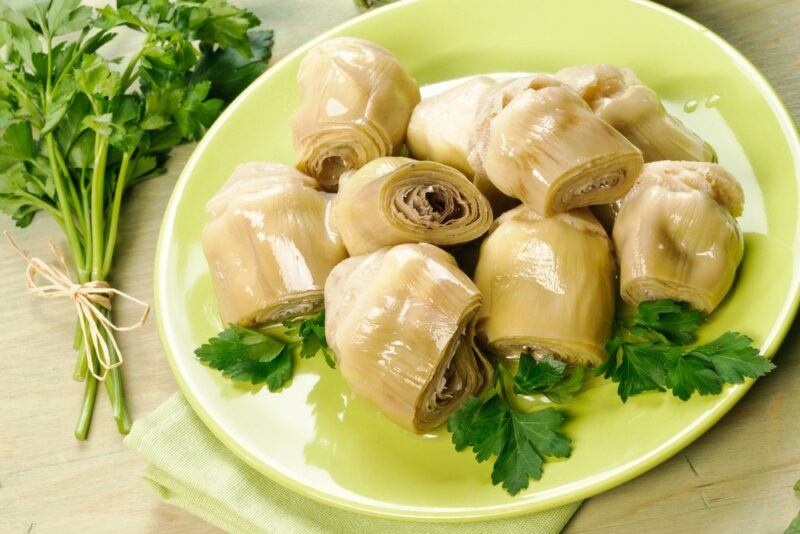
Artichoke hearts mightn’t seem like a low fiber choice, but they actually work surprisingly well. You could start with a whole artichoke and get down to the heart. Honestly though, that’s too much work and a waste if you’re not going to use the artichoke leaves.
So, why not skip the drama and go with canned artichoke hearts instead? These are much easier to use and still contain most of the same nutrients.
Pumpkin

Pumpkin is often called a high fiber vegetable. Despite this, you can fit it onto a low fiber diet. The same is true for many other types of winter squash (as long as you fully remove the skin and all the seeds).
This also means that you can enjoy pumpkin soup regularly or combine pumpkin with other low fiber vegetables, like cooked carrots or sweet potatoes.
Some Cold Cereals

Some types of breakfast cereal can be included on a low fiber diet too, including Rice Krispies, Cheerios, and Cornflakes. Here, you’re looking for plain cereals that are refined and don’t have added fiber. You’ll need to avoid any cereal with bran or whole wheat. Also skip any that say high fiber on the box.
A glance at the ingredients label should help you work out which types of cereal to use. Just be sure to check the portion size, as many ingredients labels focus on smaller servings than we use in practice.
Plain Crackers
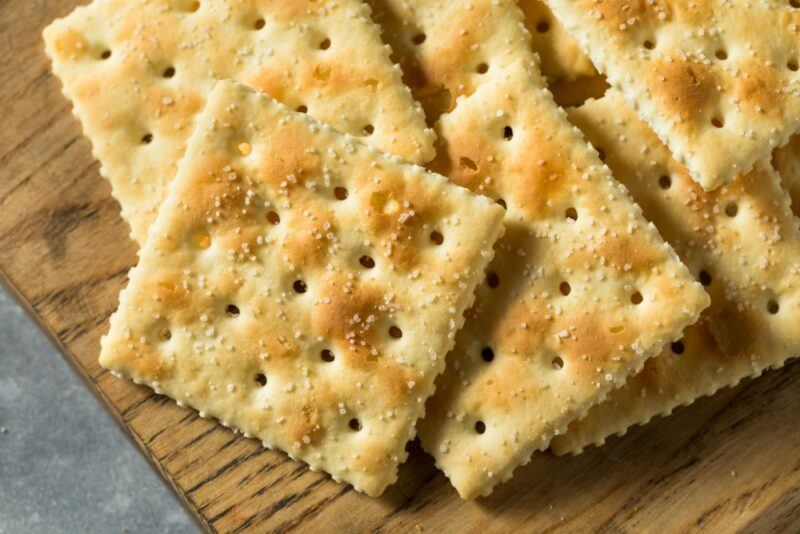
Some plain crackers, like saltines, work well for low fiber eaters. Here too you need to look for refined products that aren’t multigrain and don’t rely on bran. While plain crackers aren’t the most nutritious snack, they can be paired with other ingredients, like smooth peanut butter, low fiber fruit, or cheese.
Tips For A Low Fiber Diet
Tip #1 – Don’t Forget Water
Drink at least 8 cups or about 2 liters of water every day to help you stay regular despite the fiber restriction.
Tip #2 – Say No To Gas-Forming Veggies
Avoid gas-forming vegetables like cabbage, beets, Brussels sprouts, broccoli, parsnips, peppers, lima beans, okra, and potato skins.
Tip #3 – Supplements And Multivitamins
You may need supplements or multivitamins because you are restricting your diet. But of course, as always, check first with your doctor or dietician.
Tip #4 – Be Sure To Cook Your Vegetables
Even vegetables that are allowed on a low fiber diet generally need to be peeled, deseeded, and cooked before being eaten. Raw vegetables can easily lead to digestive side effects. If cooking the veggies feels like too much work, opt for canned ones instead, as these are fully cooked.
Tip #5 – A Food Diary Will Help
Food diaries play two important roles. First, they help you track your fiber intake. This is valuable, as it’s not enough to just focus on low fiber foods. You also need to keep your total daily fiber intake low.
Second, food dairies help you see whether any foods are causing digestive side effects. After all, you may be sensitive to some foods even though they’re low in fiber. Tracking your food and symptoms regularly will help you find the best eating approach for your individual needs.
Tip #6 – Meal Planning Is Important
Make a meal plan. Don’t go unprepared on a low fiber diet. Make sure you understand low fiber foods and plan how you are going to incorporate them with other foods in your diet. Having a meal plan will also help you stay on course and contribute to your diet’s success.
Tip #7 – Slow Re-Introduction
Slowly re-introduce fiber into your diet when symptoms improve, with your doctor’s approval. Doing so gradually gives your body time to adjust and reduces the risk of side effects from the fiber.
Pay attention to your body’s reactions at the same time. In fact, this re-introduction phase is an excellent chance to see if you’re still sensitive to any foods.
When Should You Follow A Low Fiber Diet?
Fiber plays crucial roles in our digestive health and most of us need more of it, not less. Because of this, you should only follow a low fiber diet if you have one of the conditions discussed previously, after some types of surgery, or if you get many side effects after consuming fiber.
Even then, it’s important to closely follow your doctor’s recommendations. They’ll often advise you to only follow a low fiber diet for a while, then start to gradually increase your fiber intake again. Sometimes you may need to follow a low fiber diet for much longer, particularly if your body continues to struggle with undigested food.
However, you shouldn’t follow a low fiber diet just because you feel like it. Most of us need plenty of fiber to stay healthy and regular.
What Is A Low Residue Diet?
A low fiber diet simply involves focusing on low fiber foods, particularly those we’ve featured on this list. A low residue diet is similar, but is more restrictive, as it also includes foods that create residue in your colon after digestion – even if they’re not high in fiber.
This distinction means that some foods feature on a low fiber diet, but not on a low residue one.
Dairy is a great example here and people on low residue diets are often told to focus on low fat dairy and also limit their dairy intake. Similarly, a low residue diet often suggests limiting many spicy ingredients and those with strong flavors, including chili powder, garlic, hot mustard, and chili sauce.
However, low residue diets aren’t as well researched or supported as low fiber ones. It’s not even clear whether residue from low fiber foods is a real thing we should be concerned about.
As a result, it’s best to pay close attention to your physical responses to different foods. This will give you the most helpful information about which foods to eat and which ones to avoid.


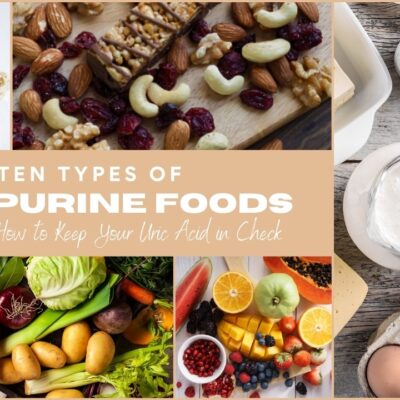
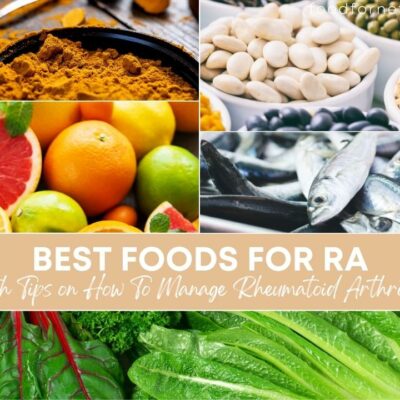


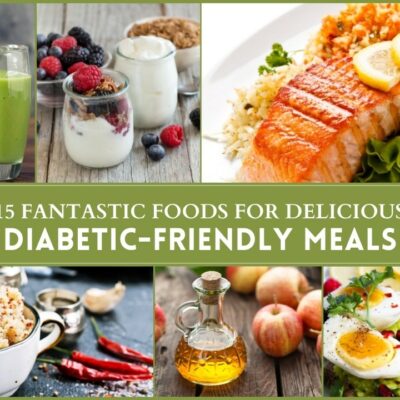
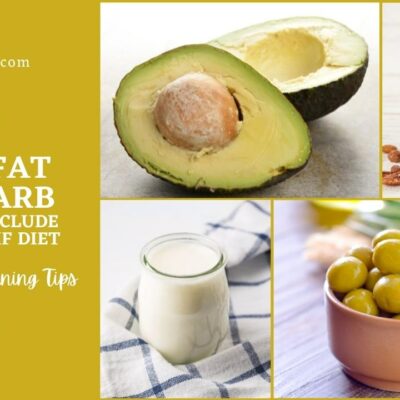
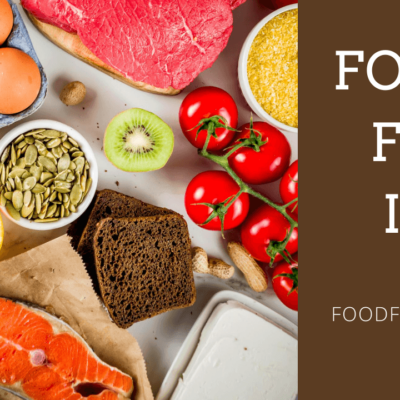



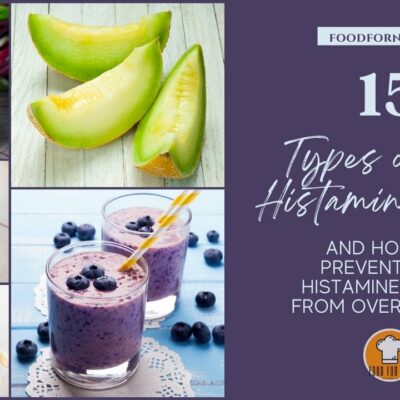

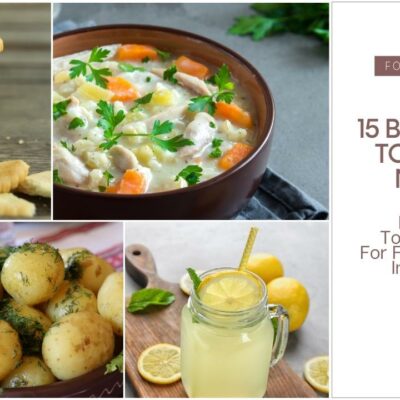

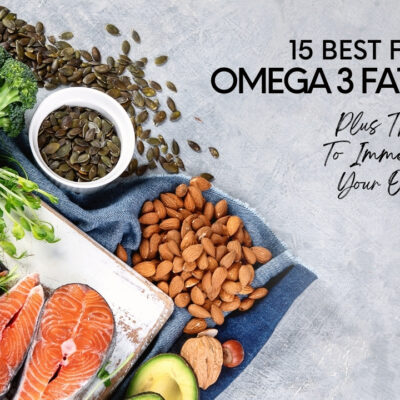
 48 Fun Alcoholic Shots To Make At Home
48 Fun Alcoholic Shots To Make At Home
Can u have fish in butter and parsley sauce on a low residue diet